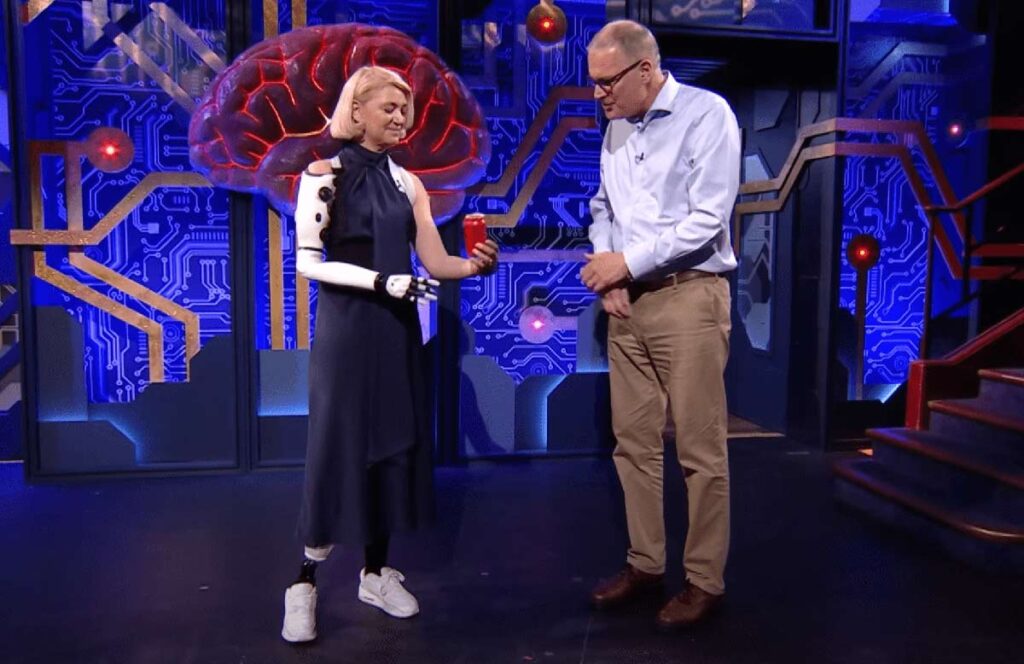In 2017, Tania Burgess’s life took a dramatic turn when she fell onto the tracks at Camden Town tube station, resulting in the amputation of her left arm. This article explores her journey from that fateful day to her remarkable recovery and the life-changing impact of her new bionic arm.
| Key Takeaway | Description |
|---|---|
| Incident and Recovery | Learn about the incident and the survivor’s journey to recovery. |
| Bionic Arm Technology | Discover how advanced bionic arms are transforming lives. |
| AI and Robotics in Prosthetics | Understand the role of AI and robotics in modern prosthetics. |
| Community Support Importance | The critical role of support networks for amputees. |
The Life-Changing Incident
The incident occurred on a typical day in 2017 when Tania Burgess, a resident of London, found herself in a horrifying situation. While waiting for the train at Camden Town tube station, she accidentally fell onto the tracks. The fall resulted in catastrophic injuries, necessitating the immediate amputation of her left arm to save her life. The swift response from bystanders and emergency services played a crucial role in her survival, highlighting the importance of timely intervention in such critical situations.
The Road to Recovery
Tania’s recovery journey was arduous and filled with challenges. Following the incident, she was rushed to University College Hospital in London, where she underwent several surgeries. The medical team worked tirelessly to stabilize her condition and manage the amputation. Tania spent weeks in the hospital, enduring intense pain and grappling with the emotional trauma of her sudden disability. Physical therapy became a daily routine, and psychological support was essential in helping her cope with the drastic changes in her life. The unwavering support from her family, friends, and the broader amputee community played a pivotal role in her recovery.
Embracing Technology: The Bionic Arm
As Tania adjusted to life without her arm, the prospect of a bionic limb offered a beacon of hope. She was introduced to the Hero Arm, a state-of-the-art bionic arm developed by Open Bionics. The Hero Arm is a lightweight, customizable prosthetic that offers multi-grip functionality, making it a game-changer for amputees. For Tania, this technological marvel meant regaining a semblance of normalcy in her daily life. The bionic arm allowed her to perform tasks that were previously challenging, significantly enhancing her independence and quality of life.
The Role of AI and Robotics in Bionic Arms
The integration of AI and robotics in modern prosthetics has revolutionized the field, offering unprecedented functionality and customization. The Hero Arm, for instance, uses advanced sensors and algorithms to mimic natural hand movements, providing a seamless user experience. These technologies not only improve the physical capabilities of the prosthetics but also offer adaptive features that cater to individual needs. For Tania, the AI-driven features of her bionic arm have been instrumental in her rehabilitation, enabling her to perform intricate tasks with precision and ease.
Amputee Support and Rehabilitation
Support and rehabilitation are crucial for amputees, and Tania’s journey underscores this importance. Organizations like LimbPower and Blesma have been instrumental in providing resources and support to amputees. These organizations offer physical rehabilitation programs, peer mentoring, and mental health resources, ensuring a holistic approach to recovery. Online platforms like isBrave also play a significant role in providing amputee support, connecting individuals with similar experiences and fostering a sense of community.
Real-Life Impact: Stories of Transformation
Tania’s story is just one among many where advanced prosthetics have transformed lives. The Hero Arm has empowered numerous individuals, enabling them to overcome physical limitations and achieve their goals. Personal testimonials from other users highlight the profound impact of these devices, showcasing stories of resilience and triumph. These narratives serve as powerful reminders of the potential of technology to change lives for the better.
Future Prospects in Prosthetic Technology
The field of prosthetic technology is rapidly evolving, with ongoing research and innovations paving the way for more advanced solutions. Future developments are expected to include enhanced sensory feedback, improved dexterity, and even more intuitive control systems. Experts predict that the integration of AI and machine learning will further refine the functionality of prosthetics, making them even more responsive to the user’s needs. These advancements hold the promise of significantly improving the lives of amputees, offering them greater autonomy and confidence.
Challenges and Ethical Considerations
Despite the remarkable progress, the development of advanced prosthetics is not without challenges. High costs, limited accessibility, and the need for specialized training are significant barriers. Additionally, ethical considerations regarding the use of AI and robotics in human augmentation must be addressed. Ensuring that these technologies are used responsibly and equitably is paramount to their success and acceptance in society.
Conclusion
Tania Burgess’s journey from a tragic accident to embracing life with a bionic arm is a testament to human resilience and the transformative power of technology. Her story, along with many others, highlights the incredible advancements in prosthetic technology and the potential it holds for the future. As research and innovation continue to push boundaries, the future looks promising for amputees worldwide, offering them new opportunities for independence and empowerment.
FAQ
What happened to the survivor on the tube tracks?
Tania Burgess fell onto the tracks at Camden Town tube station in 2017, resulting in severe injuries and the amputation of her left arm.
How does the bionic arm work?
The bionic arm, such as the Hero Arm by Open Bionics, uses advanced sensors and AI to mimic natural hand movements, providing enhanced functionality and customization.
What are the benefits of AI in prosthetics?
AI enhances prosthetic functionality by enabling adaptive features, improving dexterity, and providing a more natural user experience.
How can amputees find support and resources?
Amputees can find support through organizations like LimbPower and Blesma, as well as online platforms like isBrave which provide community and resources.
